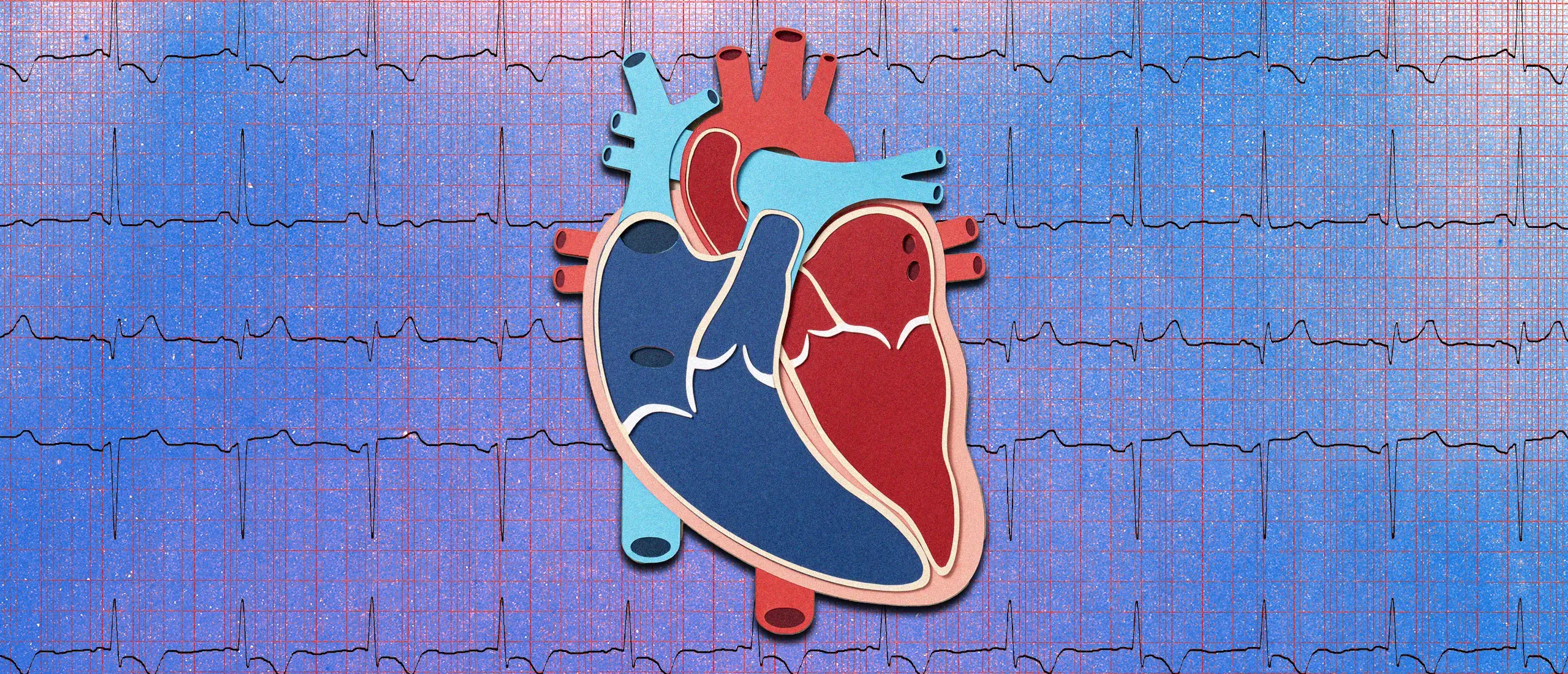HRV Varies For Everyone. This Is How to Get Your Healthiest Score
- By Sydney Bueckert, NASM C.P.T., C.E.S., F.N.S., G.P.T.S.
- February 5, 2024
When you want to boost performance what’s your go-to? A dip in the cold plunge tub? A dose of creatine? A session with your massage gun? These practices can all help, but tuning into (and improving) your heart rate variability (HRV)—the time interval between heartbeats, which varies slightly from beat to beat—should be step one, according to WHOOP president of performance science and principal scientist Kristen Holmes, PhD.
“[HRV] is an indicator of how capable you are at adapting to external stress,” Holmes told Hone Health CEO Saad Alam on a recent episode of the Hone In podcast. While HRV is a function of the heart, it originates in the autonomic nervous system, which has two branches—the parasympathetic and the sympathetic—that send competing signals to the heart. “You want your heart to be responsive to both inputs. The more recovered you are, the more responsive your heart is going to be, and the more capable you are going to be responding to the demands in your environment in an optimal way,” she explains.
But what is a good HRV? Here’s how to pinpoint a solid HRV score, and how to improve your HRV for better performance, per Holmes.
How to boost your HRV, stat? Holmes reveals her favorite practices for moving the needle on the Hone In podcast.
What Is a Good HRV?
In general, a higher heart rate variability is considered better (1). “A higher HRV relative to your baseline is going to promote a survival advantage, because it allows you to respond and adapt to your environment in a more functional way,” says Holmes. On the other hand, a low HRV has been linked with an increased risk for various health problems, such as cardiovascular disease, diabetes, depression, and anxiety (2, 3, 4).
However, the most important thing to know about HRV is that it’s a highly individualized metric that differs greatly from one person to the next, one day to the next, and even one season to the next (5). A number of factors like age, gender, fitness level, lifestyle, environment, and genetics factor in. “Understanding that your body has a memory, what you’ve done to it leading up to that moment where you get your first heart rate variability measurement has an impact,” says Holmes.
Heart Rate Variability Differences by Age and Gender
For the most part, HRV decreases with age, and males tend to have slightly higher HRV than females (although a more gradual reduction occurs in women over 60) (6, 7). One study found the average HRV for men is right around 40, and for women 37 (8). Elite athletes also usually have a higher HRV than non-athletes.
But there are plenty of fit people who have a low HRV. Which is why it’s most useful to track your own HRV trends over time versus aiming to hit an average.
How to Improve HRV
Holmes suggests thinking of your behaviors as inputs. Your sleep quality, ability to manage stress, and more can impact your HRV. “It’s worth figuring out what behaviors are non-negotiable as it relates to setting a foundation that enables [you] to respond and adapt to [your] environment in the most functional way possible.”
Here are Holmes’ three non-negotiables for HRV:
Get quality sleep
Holmes ranks sleep at the very top of her list. Going to sleep and waking up at a consistent time every day boosts HRV by keeping your circadian rhythm steady, affecting how you feel and perform the next day. “Your sleep-wake time directly influences your HRV,” explains Holmes. “For every minute after 30 minutes, we start to see a decline in your heart rate variability.”
Duration of sleep also matters. ”The biggest bonus of REM sleep is kind of at the back end of your sleep. If you have short sleep, you end up missing out on REM,” says Holmes. The magic to hitting the deep sleep sweet spot is the hours of sleep you get before midnight. “Ensure that you’re getting to sleep a couple of hours before midnight ideally,” she adds.
Stay hydrated
According to Holmes, HRV is extremely sensitive to hydration. “Literally I can be under-hydrated, right in this moment. Then I can have a couple of glasses of water, and all of a sudden, my heart rate variability will go back up by 20 points,” she says.
Research agrees. One study found that of a small group of college athletes who performed the same workout, only the dehydrated group saw significant reductions in HRV scores (9).
Drink less alcohol
“Alcohol is another one that is going to move around your heart variability substantially,” says Holmes. How? Research is limited. An older study linked consuming alcohol to reduced HRV and increased resting heart rate (10). Another found that consuming just one standard drink elevated participants’ heart rates by five beats per minute (11). A more recent WHOOP analysis also suggests HRV dropped by an average of seven milliseconds after one drink.
References
1. Tiwari, R. et al. (2021). Analysis of Heart Rate Variability and Implication of Different Factors on Heart Rate Variability.
2. Maheshwari, A. et al. (2016). Low Heart Rate Variability in a 2-Minute Electrocardiogram Recording Is Associated with an Increased Risk of Sudden Cardiac Death in the General Population: The Atherosclerosis Risk in Communities Study.
3. Benichou, T. et al. (2018). Heart Rate Variability in Type 2 Diabetes Mellitus: Systematic Review and Meta-Analysis.
4. Koch, C. et al. (2019). A Meta-Analysis of Heart Rate Variability in Major Depression.
5. Kristel-Boneh, E. et al. (2000). Summer-Winter Differences in 24 Hour Variability of Heart Rate.
6. Kumral, D. et al. (2019). The Age-Dependent Relationship Between Resting Heart Rate Variability and Functional Brain Connectivity.
7. Chean Swan, N. et al. (2020). The Influence Of Age and Gender On Heart Rate Variability.
8. Voss, A. et al. (2015). Short-Term Heart Rate Variability—Influence of Gender and Age in Healthy Subjects.
9. Castro-Sepulveda, M. et al. (2014). Hydration Status After Exercise Affect Resting Metabolic Rate and Heart Rate Variability.
10. Ryan, J. et al. (2002). Relations Between Alcohol Consumption, Heart Rate, and Heart Rate Variability in Men.
11. Rasnim, S. et al. (2020). Effects of Alcohol on Blood Pressure.












